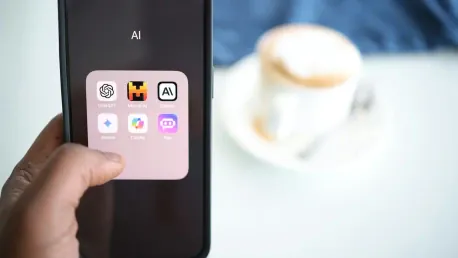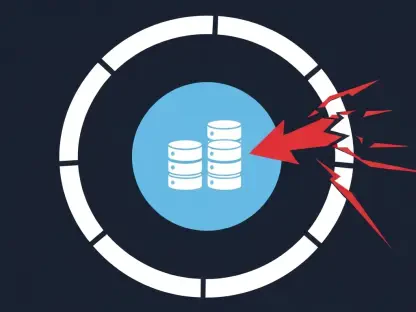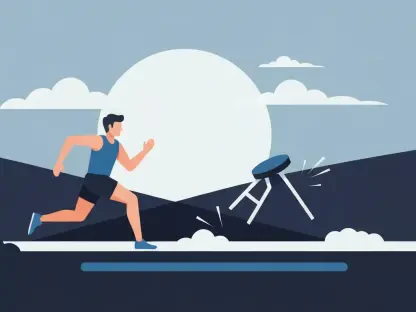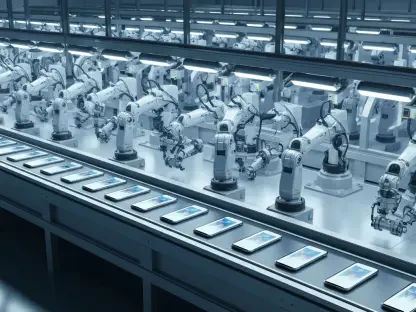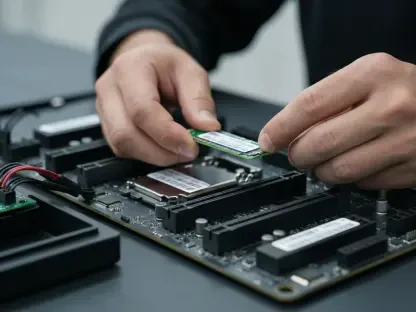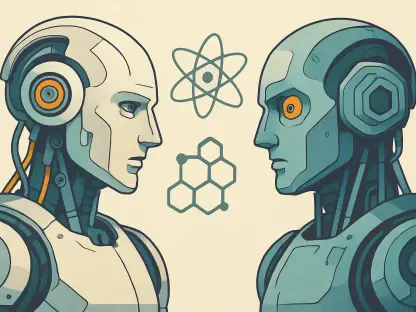The advent of artificial intelligence (AI) has been a transformative force in various sectors, and its impact on human creativity and authorship is no exception. The integration of AI into these domains has sparked both excitement and apprehension, as it brings forth new opportunities while challenging long-held views on what constitutes original human expression. This article examines the intricate relationship between AI and human creativity, exploring its implications on authorship, authenticity, and the ethics of creative work.
AI’s Role in the Creative Process
Assistive Applications of AI
The creative process has always been deeply personal and human-centric. However, AI tools like ChatGPT are increasingly being used to assist authors, artists, and musicians in their work. Vauhini Vara’s experience with ChatGPT, using the tool to overcome her struggle in writing about her sister’s death, illustrates AI’s potential to facilitate the creative process, sometimes yielding results imbued with surprising emotional depth. By leveraging such technology, creative professionals can discover new pathways to express emotions and narratives that might have been challenging to articulate through traditional means. This enhanced capacity to assist and inspire creatives highlights the evolving role AI plays in transforming the artistic landscape.
Moreover, AI tools have demonstrated remarkable capabilities in recognizing patterns, generating ideas, and even mimicking styles of various artists. While these functions were once purely speculative, they now represent a practical reality, where algorithms can identify what might appeal to audiences based on extensive data analysis. This melding of AI’s analytic prowess with artistic vision opens up unexplored territories, offering creators both a collaborator and a critic in their artistic endeavors. The integration of AI into the creative process symbolizes a significant shift, with technology serving as both muse and tool, enabling a new era of hybrid creativity.
Authenticity and Emotional Depth
Generating content that resonates on an emotional level is a hallmark of genuine human creativity. AI’s ability to produce such content raises questions about the authenticity of AI-assisted creations. When Vara turned to ChatGPT for help, the outputs not only reflected coherence but also conveyed a sense of human-like empathy, blurring the lines between AI-generated and human-authored works. These developments force the creative community and society at large to reflect on what constitutes genuine creativity and whether AI’s contributions should be regarded as authentic.
The notion of emotional depth in AI creations challenges the traditional boundaries of what is considered human-centric art. With AI’s ability to learn from vast datasets and craft narratives or artworks that evoke emotion, the debate about authenticity becomes more complex. Some purists argue that true art must stem from human experience and consciousness, while others believe that the collaborative effort between humans and machines can enrich and expand the horizons of artistic expression. This intersection of technology and artistry demands a reevaluation of authenticity, encouraging a broader understanding of creativity that includes diverse sources and processes.
Ethical Considerations in AI-Assisted Creativity
Defining Authorship
The rise of AI-creativity brings forward the challenge of defining authorship. As AI begins to play a more substantive role in the creation of literary and artistic works, it is essential to reconsider what it means to be an author. Is the individual who initiates the AI tool’s use the true creator, or does the AI itself share in the authorship? These questions are not merely academic; they bear significant implications for copyright laws, intellectual property rights, and the recognition of creative labor. The delineation of authorship in the age of AI requires new frameworks that can accommodate the evolving nature of human-machine collaboration.
The issue of authorship also extends to the ownership and attribution of AI-generated content. In traditional creative processes, the boundaries of authorship are relatively clear, with creators receiving recognition and compensation for their work. However, with AI’s substantial role in generating content, the lines become blurred. This ambiguity necessitates a reevaluation of legal and ethical standards to ensure that both human creators and AI contributions are fairly acknowledged. Establishing clear guidelines for authorship in an era of AI-assisted creation will be pivotal in maintaining the integrity and sustainability of the creative industries.
Fairness and Exploitation
The ethical dimensions of AI-integrated creativity extend to the data sets used to train these systems. AI’s creative abilities hinge on vast amounts of human-created data, raising concerns about exploitation and fairness in the creative economy. How do we ensure that the original content creators are adequately recognized and compensated in this new paradigm? The use of human-generated content as training material for AI systems brings into focus issues of consent, credit, and remuneration. Striking a balance between leveraging AI’s capabilities and safeguarding the rights of human contributors demands diligent ethical considerations and policy interventions.
Additionally, the power dynamics associated with AI and data utilization cannot be overlooked. Companies that develop and deploy AI tools often wield significant control over the data and its applications, potentially marginalizing the contributions of individual creators. This dynamic raises critical questions about the equitable distribution of opportunities and rewards in the creative industries. Ensuring that AI-enhanced creativity does not perpetuate or exacerbate existing inequalities requires proactive efforts to uphold fairness and inclusivity. By addressing these ethical concerns, the creative community can foster a more just and equitable environment where both human and AI contributions are valued.
Historical Context and Human Acceptance
Technological Adoption in Art
Artists have historically embraced technological innovations with a blend of skepticism and eventual acceptance. From player pianos to synthesizers, new tools have expanded the boundaries of artistic expression. AI represents the latest in this lineage of tools, though its transformative impact may be deeper and more complex. The history of technological adoption in art demonstrates a recurring pattern where initial resistance gives way to appreciation and incorporation of new methods. By examining these historical precedents, we can gain insights into how AI might be seamlessly integrated into contemporary creative practices.
The evolution of art has been marked by continuous experimentation with technology, pushing the limits of what is possible. The advent of photography challenged traditional notions of visual art, while digital tools revolutionized graphic design and animation. These technological shifts were met with both hesitation and enthusiasm, ultimately leading to the expansion of artistic possibilities. AI’s emergence marks a continuation of this trajectory, offering artists innovative ways to explore and express their creativity. By recognizing the historical context of technological adoption in art, we can better appreciate AI’s potential to enhance and transform the creative landscape.
Philosophical Reflections on Creativity
The introduction of AI in creative fields rekindles age-old philosophical debates about the nature of creativity and consciousness. Figures like Descartes and Hobbes pondered the limits of machine capability, a conversation that remains relevant as AI demonstrates unprecedented levels of creative potential. The philosophical implications of AI-generated art challenge traditional notions of authorship, originality, and human exceptionalism. These reflections prompt us to reconsider the essence of creativity and the interplay between human intuition and machine intelligence in artistic endeavors.
Philosophers and thinkers have long grappled with questions about the origins and nature of creativity. Is creativity an exclusively human attribute, or can machines possess a form of creative agency? The advancements in AI force us to confront these questions with renewed urgency. By engaging with philosophical perspectives on creativity, we can better understand the implications of AI’s role in artistic production. These reflections also highlight the importance of maintaining a dialogue between technology and the humanities, fostering a holistic approach to creativity that values both computational innovation and human insight.
Technological Influence and Future Trends
Expanding Artistic Boundaries
Technological advancements have continuously redefined artistic possibilities. Instruments and tools of the past paved the way for AI’s emergence, suggesting that while AI presents new challenges, it is also a natural progression in the evolution of artistic expression. Artists are now faced with the challenge and opportunity to redefine creativity in partnership with AI. By embracing this new paradigm, creatives can explore uncharted territories, pushing the boundaries of traditional art forms and developing innovative hybrid practices that blend human ingenuity with machine learning.
The expansion of artistic boundaries through technology is not merely about embracing new tools but also about fostering a culture of experimentation and collaboration. AI offers unprecedented opportunities for interdisciplinary work, where artists, technologists, and researchers can join forces to create groundbreaking projects. This collaborative spirit can lead to the development of new aesthetic languages and creative methodologies that reflect the diverse influences of both human and artificial intelligence. As artists continue to navigate the evolving landscape of AI-enhanced creativity, they will play a crucial role in shaping the future of art and its intersection with technology.
Navigating New Artistic Landscapes
As AI continues to evolve, it is crucial to navigate this new landscape with both caution and openness. Creatives need to adapt to the possibilities AI offers while preserving the uniqueness of human artistry. The future of creativity may involve a symbiotic relationship where AI serves as both a tool and a collaborator in the artistic process. This dynamic requires a balance between embracing technological advancements and maintaining the integrity of human expression. By striking this balance, artists can leverage AI’s capabilities without losing sight of the intrinsic value of their creative vision.
The journey of integrating AI into artistic practices involves constant learning and adaptation. Artists must remain vigilant about the potential ethical and societal implications of AI, ensuring that their work aligns with principles of fairness, transparency, and respect for human contribution. By fostering a critical and reflective approach to AI, creatives can navigate the complexities of this emerging landscape with informed perspectives. The evolution of art in the age of AI will depend on the ability to harmonize technological innovation with human creativity, leading to a richer and more diverse artistic ecosystem.
Broader Implications and Ethical Concerns
The Role of Corporations
The integration of AI into creative processes also calls attention to the role of corporations. There is a risk that commercial entities may exploit AI’s capabilities, potentially overshadowing the human labor that underlies these AI systems. Transparency and fair practices must be upheld to ensure that the creative economy remains just and ethical. As corporations continue to invest in AI technology, it is imperative to establish guidelines that protect the rights and contributions of human creators. By advocating for ethical standards and accountability, the creative community can mitigate the risks associated with corporate influence.
Corporations play a significant role in shaping the future of AI-enhanced creativity, often driving innovation through substantial investments in research and development. However, this influence must be balanced with a commitment to ethical practices that prioritize the well-being of individual artists and creators. Ensuring that commercial interests do not undermine the principles of fairness and equity is crucial for sustaining a vibrant and inclusive creative economy. By fostering partnerships between corporations, artists, and policymakers, the creative community can work towards a more ethical and transparent framework for AI integration.
Preserving Human Distinctiveness
The advent of artificial intelligence (AI) has significantly transformed various sectors, deeply influencing the realms of human creativity and authorship. The integration of AI into creative domains has sparked a mix of excitement and apprehension. On one hand, it opens up new opportunities and expands the boundaries of what can be achieved creatively. On the other hand, it challenges long-held notions of original human expression and what it means to create authentically. This fascinating interplay between AI and human creativity invites us to reconsider traditional ideas about authorship and creativity.
AI’s potential in creative fields is vast. It can compose music, generate visual art, and even write articles, blurring the lines between human-made and machine-made content. This raises essential questions about the authenticity of AI-generated works and their ethical implications. For instance, can a piece created by AI be considered “art”? Who holds the authorship rights to an AI-generated piece? These questions force us to rethink our understanding of creativity.
In conclusion, AI’s impact on human creativity is profound and multi-faceted. By exploring its implications on authorship and authenticity, we can better understand the evolving nature of creative work in the AI era—and address the ethical considerations that come with it.
